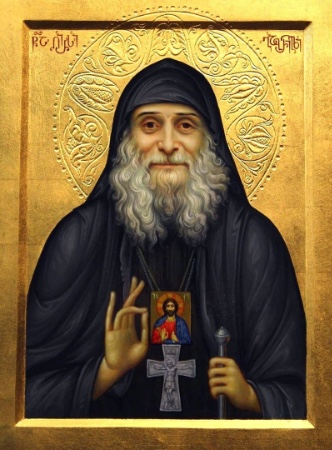
Venerable Gabriel of Samtavisi
Commemorated on October 20
Venerable Gabriel was born in 1929 at Tbilisi, Georgia, which was governed by the Soviet Union. The young Goderdzi Urgebadze was dedicated in prayer from his childhood and pursued an ascetical life beyond his years, piously enduring ongoing attacks from demons.
When at the age of 12 his mother requested him to prioritise family over faith, he left home and roamed from monastery to monastery. He eventually returned home and completed his compulsory military service in 1949. Following this, he continued with his ascetical labours and at the age of 26, in 1955, was ordained presbyter and monk, and named Gabriel.
His most famous act, one which earned him his titles of "Fool for Christ" and "Confessor", came in 1965 at the May Day rally in Tbilisi. He took kerosene and burned the giant portrait of Lenin, the leader of the October Revolution which installed Communist rule. He then stood on a second floor balcony and gave a sermon to the shocked crowd, saying: "The Lord said, 'You shall have no other gods before Me. You shall not make for yourself an idol or a likeness of anything in heaven above, or in the earth beneath, or in the waters under the earth. You shall not bow down to them or serve them, for I, the Lord your God, am a jealous God…' (Exodus 20:3-5). People, come to your senses! The Georgians have always been Christians! So why are you bowing down before idols? Jesus Christ died and rose again… But your cast idols will never be resurrected. Even during their life they were dead…"
The communist Soviet regime planned a show-trial and execution. It also wanted to implicate the Georgian Patriarchate in this incident. Despite torture, Fr Gabriel stood firm and was released as a lunatic with the doctor’s note saying, "When someone talks to him, he surely mentions God, angels, and icons." Up to Gabriel’s final days, he remained firm in the faith and strove to restore Orthodoxy to Georgia. He reposed in the Lord on 2 November 1995. Many miracles were ascribed to him, and his grave at Mtskheta attracted an increasing number of pilgrims. He was recognised as a Saint by the Patriarchate of Georgia on 20 December 2012.

Source: Lychnos February/March 2020.